Blitz Kids (64 page)
Authors: Sean Longden

Ron Leagas (photographed in 2010) joined the army aged sixteen. He volunteered after an argument with his mother which culminated in her throwing a stew over him. He had to forge a letter from his father giving his age as eighteen. When the army discovered his true age, Ron successfully pleaded with his commanding officer to be allowed to remain in the army.
He was wounded in Normandy and spent the rest of the war in relative comfort at a base in Gibraltar.
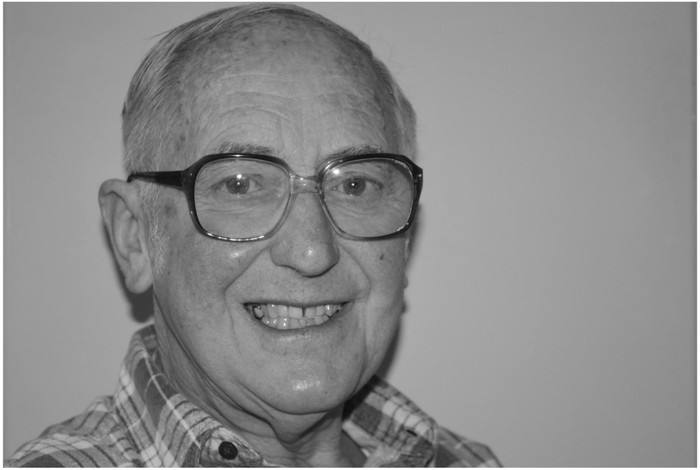
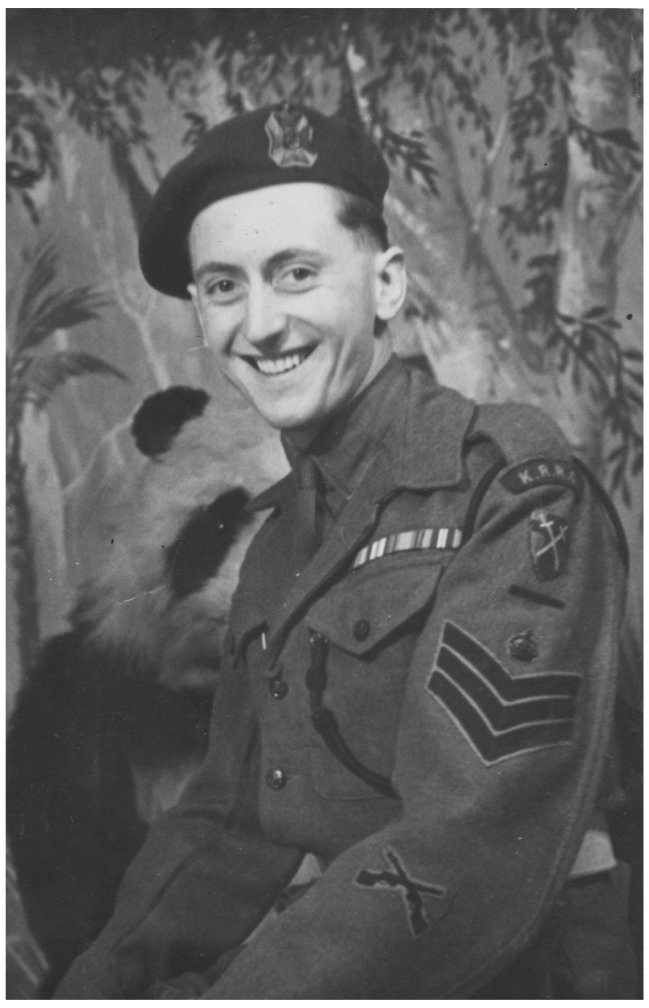
Roy Finch (photographed in 2010) volunteered for the army aged seventeen after his seriously wounded brother was repatriated from a prisoner-of-war camp. With his brother back home, he felt it was his turn to serve. After he volunteered, his brother took him back to the recruiting office telling them he had given a false age. The sergeant refused to release him and Roy landed on D-Day as a seventeen year old.
He witnessed the horrors of Belsen concentration camp when it was liberated, an experience that had a deep emotional impact upon him.
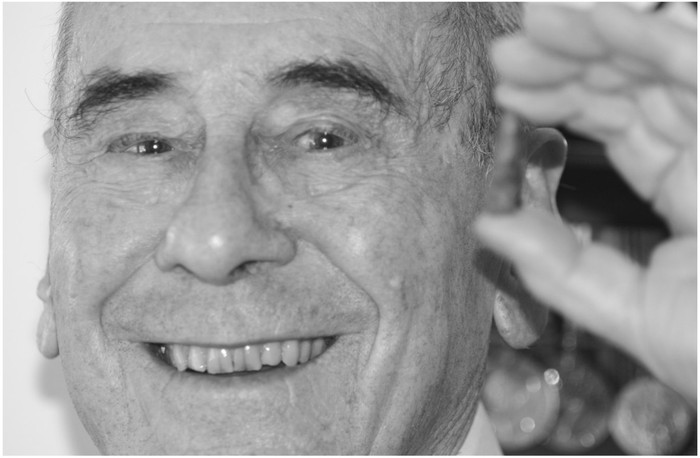
Len Chester (photographed in 2010) holding the German bullet that nearly hit him when he was serving as a Royal Marine ‘Boy Bugler’ on a warship in 1940, aged just fourteen.
The first time he ever attended a funeral was in 1940 at the burial of six sailors. As he tried to play
The Last Post
, he broke down in tears and was consoled by an admiral attending the funeral.
He remained in the Royal Marines post war and completed eighteen years’ service.
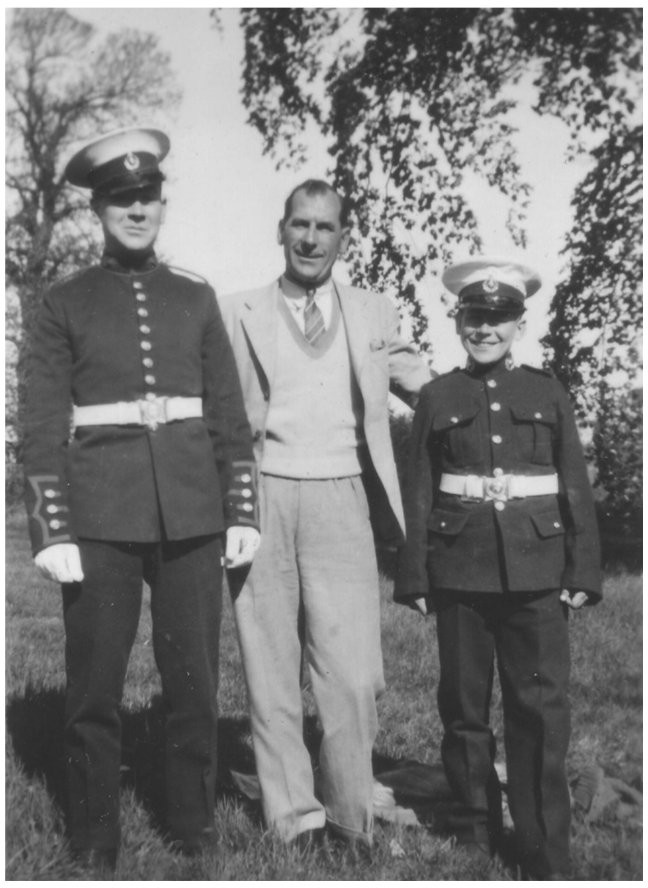
Len (right) aged fourteen, with his father and brother after qualifying as a bugler.

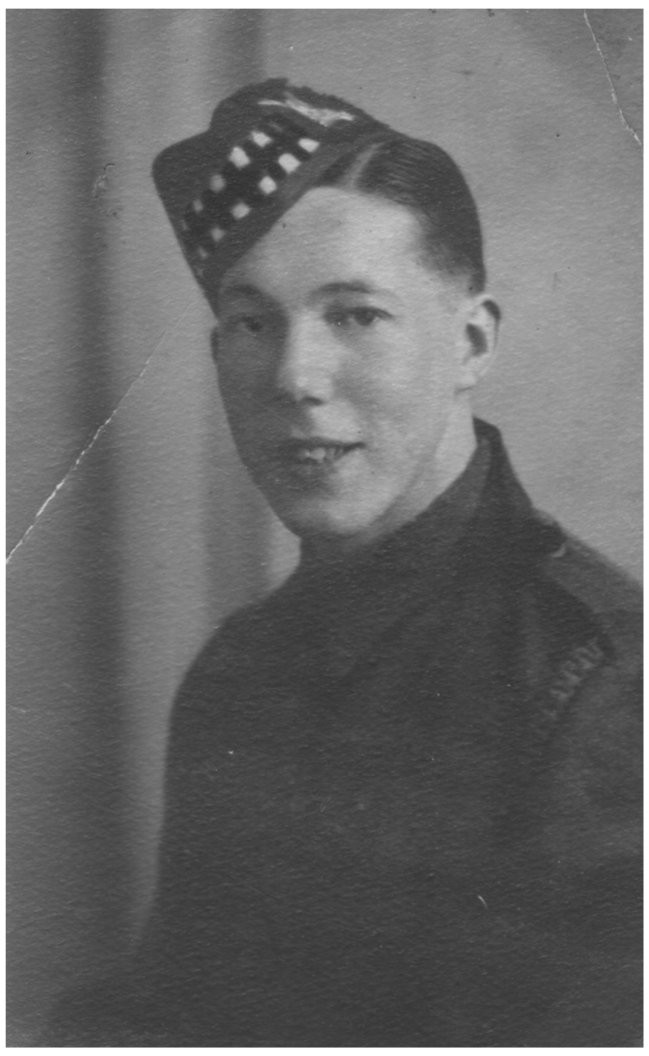
Ted (photographed in 2010) had always wanted to be a soldier, like his father and brothers. He volunteered for the army in 1940 aged just fourteen.
He was thrown out after six months when his true age was revealed. He rejoined, only to be thrown out for a second time when his mother wrote to his commanding officer in an attempt to prevent the sixteen year old being sent overseas.
He was eventually successful and served in Normandy where he was seriously wounded, taking a year to recover strength and movement in his wounded arm.
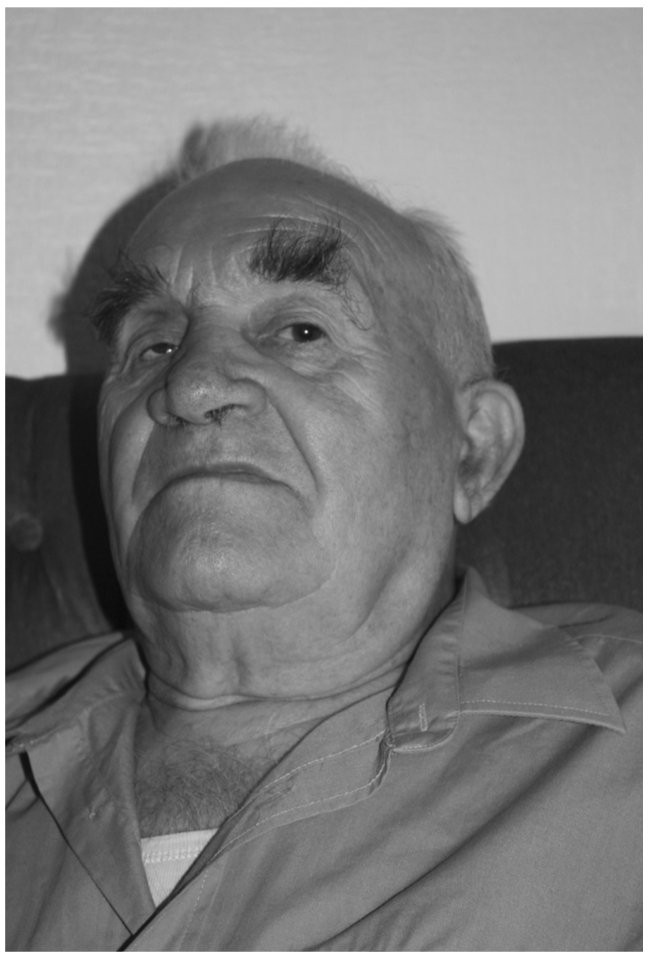
Stan (photographed in 2009) volunteered for the army in 1940 aged fifteen, but was released after ten days when his true age was uncovered. He rejoined within six months and served overseas, only to be sent home when it was revealed he was just seventeen.
He later served as an instructor before joining the commandos and landing in France on D-Day.
Post war, he left the army, only to join the Territorial Army as an instructor in 1970, serving for twenty-four years. He also spent nine years as a civilian instructor teaching Army Cadets.
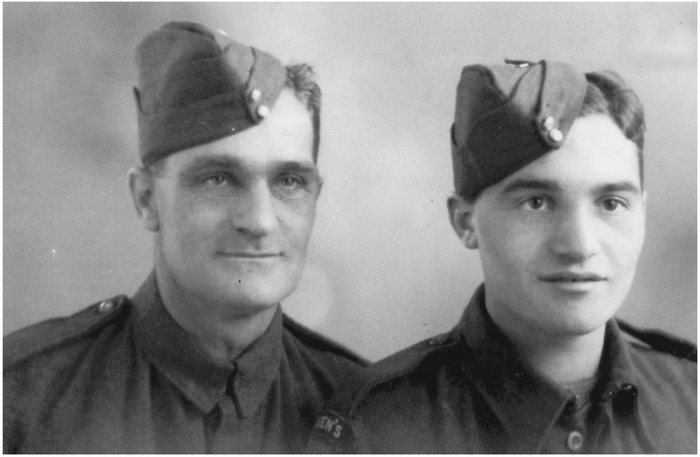
With his father in 1942.
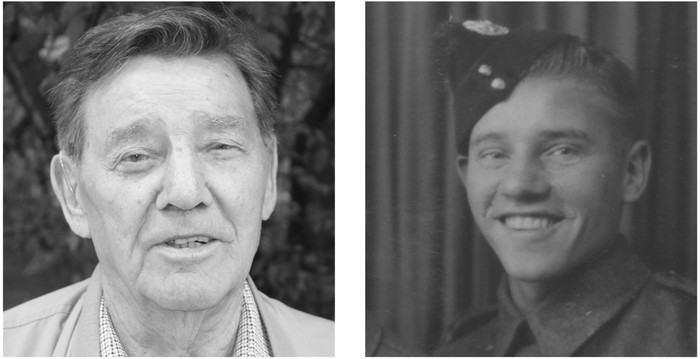
Fred Walker (photographed in 2009) joined the army aged sixteen after being sacked from his job demolishing bombed buildings in London. He volunteered for the commandos and served at Dieppe, then Sicily and Italy, before landing in Normandy on D-Day. He is now a ‘Chelsea Pensioner’.
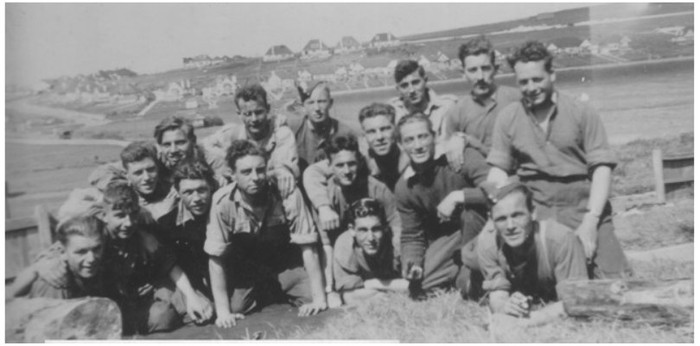
Members of No. 3 Commando shortly before the raid on Dieppe (Walker fourth from left). Among the group were other under-age recruits, including John Tupper who served with Walker in Sicily and Italy and was killed beside Walker in Normandy.

John Tupper.